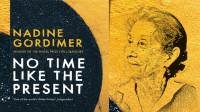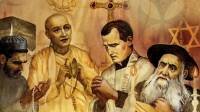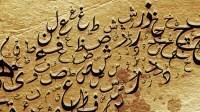Reading Mistry’s ‘Chronicle of a Corpse Bearer’ I couldn’t shake the feeling that I was getting a glimpse into something secret, almost like Hogwarts, so small and unobtrusive is the Parsi community in the subcontinent. The book is about this community, or to be more exact about an even tinier sect within that community the Khandhias as the Parsi corpse bearers are called.
The Khandias live in the shadow of the Towers of Silence, which they serve quite literally by bringing bodies of the dead from the community and leaving them in the towers where they lie as per the Parsi ritual of defiling neither the earth by burial nor the air by cremation. Exposed to carrion vultures the bones are soon stripped clean of the dead flesh and are then disposed of by the priests. No one is allowed into the heart of these towers except the designated priests therefore not even the general Parsi community is aware of their complete layout. For any inaccuracies therefore Mistry asks the reader to remember that this is after all a novel and a work of fiction.
In fact no one is allowed near a corpse shortly after the person dies because once the priests arrive in the bereaved home, they draw a line in chalk on the ground around the body which only the corpse bearers, the priests and a dog are allowed to cross. It is unknown how the custom of a dog at the funeral started but Mistry says the tradition is probably as old as Persia itself and started because dogs are said to have the ability to pick up the slightest sign of life; a dog is therefore allowed to sniff at a corpse three times during the funeral ceremonies.
Mistry stumbled on the inspiration for this story while researching a documentary for Channel 4 about corpse bearers in Bombay’s Parsi community. The documentary was never made but the essentially true tale was shaped into the story of Phiroz Elchidana, the son of a priest who is forced to leave home when he falls in love with and marries the daughter of a corpse bearer. Phiroz becomes a corpse bearer himself and joins the desperately poor community of Khandias around the Towers of Silence. The Khandias are a marginalised people, almost if not as untouchable as the untouchable caste amongst the Hindus, and at the time this story begins in the early 1940s they were extremely oppressed with no rights at all. Phiroz’s story spans a period of some sixty years during which the people of India strove to throw off the British yoke and gain independence. In 1947 the British left India and the subcontinent was partitioned. These greater events are reflected in the tiny pool of the Khandias’ own struggle for rights. In the 1940s they worked seven days a week and could be called upon to work without break for food or rest. Phiroz and his friends were involved in the movement to gain rights for their community even while Gandhi started his passive resistance and marches for freedom, and the Quit India movement ‘on the outside’. The Khandias eventually gained their rest days and rest periods, annual leave and right to education for their children just as the British left India, and India and Pakistan became independent of them and each other.
This is a simply written and touching love story but at least for me the most interesting thing was the fascinating glimpse into the life and workings of the Parsi community. If I had a complaint it was that somewhere in the middle of the book we find the characters quipping about ‘the sugar plum fairy’. What would people of this community living as they do so remote and unexposed to the world know about the sugar plum fairy? But this is always a problem for those who write in English about people who speak another language, to render their speech and idioms into English in a way that preserves the meaning.
Cyrus Mistry received the Disc Prize for South Asian Literature for this book, first published by Aleph Book Company in 2012. His other books are ‘The Radiance of Ashes’ and ‘The Passion Flower: Stories’.
The writer is a journalist based in Lahore. She tweets @RabiaAhmed4




















